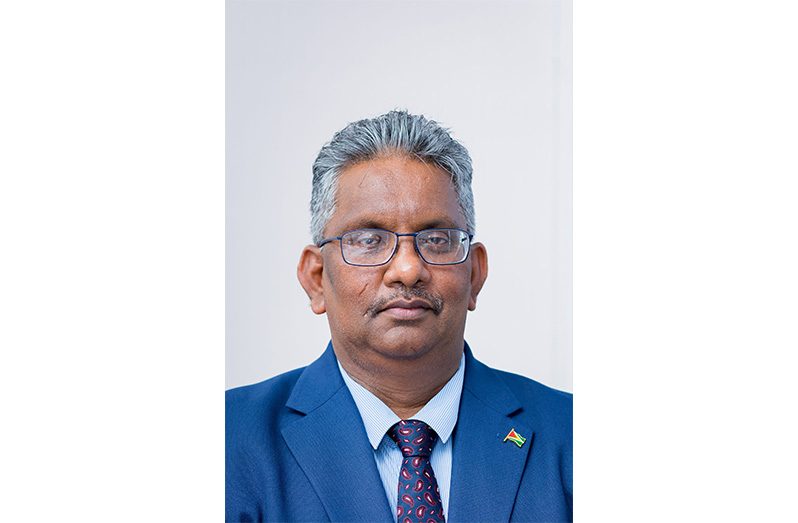–private sector stakeholder says; impressed by achievements of PPP/C over the past five years
–confident in party’s ability to continue country’s accelerated development
AS the 2025 General and Regional Elections draw closer, political parties across Guyana are making ambitious pledges to capture the electorate’s support.
But for private sector leaders like Komal Singh, Managing Director of GAICO Construction and immediate past chairman of the Private Sector Commission (PSC), the true measure of a government’s value lies not in promises, but in proven delivery and long-term vision.
In a candid conversation on the current political climate on the Starting Point Podcast, Singh emphasised that investors are closely watching key indicators beyond manifestos and public rallies.
“When you invest in a country, you look for political stability, a government that respects the sanctity of contracts, and an environment that supports private sector growth and development,” he said.
Singh added: “The private sector is the engine of the economy. We also ensure that the environment creates opportunities with real longevity.”
He noted that no serious investor wants to commit capital to an economy with short-term potential and long-term uncertainty.
“You don’t want to invest in an environment today and find, a year from now, that the economy has lost its growth potential. But when you look at Guyana over the last five years, what you see is significant potential—and more importantly, that potential has been backed by a government that is aggressively focused on infrastructure and development,” Singh said.
Reflecting on the tenure of the current administration, Singh pointed to tangible results that inspire investor confidence.
Singh believes the government has moved beyond merely making promises, demonstrating a consistent ability to deliver.
He pointed to the 2020 manifesto as a benchmark, noting that when measured against actual achievements, the administration has not only met but surpassed expectations.
One of the prime examples of follow-through, he said, is the new bridge across the Demerara River.
He reminded that between 2015 and 2020, progress on the bridge was limited to a design study. However, he noted that from 2020 onward, the current government advanced the project significantly, moving from design to construction, with the bridge now nearing completion.
Singh emphasised: “That’s a remarkable achievement. It sends a message to investors that the government is serious about growth and not just giving lip service. Whatever the government has promised is backed by a proper execution plan. They are also making sure that the private sector is playing a pivotal role in the development.”
According to him, this seriousness is also reflected in large-scale projects like the Gas-to-Energy (GTE) initiative, which is expected to significantly reduce energy costs by 50 per cent and improve competitiveness.
“These are massive projects, and a significant amount of work has already been done. If you listen to the promises now being made by the government about continuing this development, I think from an investor standpoint, there’s confidence those promises will be fulfilled,” he stated.
In Singh’s view, it is not just about infrastructure for infrastructure’s sake—it is about building a foundation for inclusive, sustainable growth.
“All of these projects are strategic,” he noted, adding that they are designed to ensure the people benefit, the business community benefits, and that a comprehensive ecosystem is created, one that supports sustainable employment, increased production, and expanded manufacturing.
According to him, over the past decade, Guyana’s manufacturing sector struggled to develop despite the country’s abundance of resources, largely due to the high cost of energy.
However, he believes that once the GTE project becomes operational, the sector will become competitive and experience substantial growth.
Singh acknowledged that it is encouraging to hear the development plans being proposed by opposition parties but cautioned that voters must approach election season with care.
He noted that historically some political leaders become active and visible only a few months before elections, engaging in handshaking and public appearances without a sustained track record.
He expressed confidence, however, that Guyana’s population is well informed, forward thinking and actively investing in the economy. As such, he believes voters will make decisions based on who is most likely to deliver on their promises.
“We have seen lip service in the past. No one wants to go back to lip service. If you’re coming to the table and talking to our Guyanese, our Guyanese want to hear about tangible promises as well as your ability to deliver,” Singh said, addressing political parties.
Asked whether he believes the economy would regress if the opposition were to return to office, Singh indicated that based on the country’s past experiences and the level of competence previously demonstrated, a decline would be very likely.
While acknowledging that it is every citizen’s constitutional right to support the political party of their choice, Singh encouraged voters to back the party that has a proven record of delivering on its promises.
According to Singh, the government has demonstrated over the past five years its ability to fulfil its promises.
He emphasised that Guyana is at a critical point in its development and cannot afford to revert to the conditions of the past.
“The entire economy and financial system are moving at high speed. Almost every single Guyanese has a stake in what is happening today. If this economy slows down tomorrow morning, you will see a lot of businesses going into bankruptcy. It is very important that we have continuity in where we are heading. Within the next five years, you will see massive transformation,” he said.
Singh urged political parties to set aside their differences when it comes to national projects, stressing the importance of unity in advancing initiatives like the new bridge across the Demerara River, the GTE project, the Lethem Road, the regional road network, and the proposed rail service between Lethem and Georgetown to facilitate access to the Brazilian market.




.jpg)









